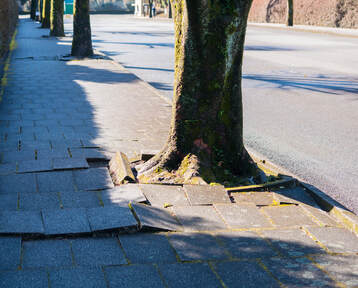 Everyone loves the appeal of a magnificent tree in the yard or reinforcing a tree house for the children. But could that tree bring specific risks to your home? Under some circumstances, a beautiful tree can be a real threat to the foundation of your house. Here’s what to do about roots and concrete, what you need to understand about the risks, and what you can do to stop issues down the road. Tree roots and soil Tree roots are very vigorous even new, little roots. Because they are compelled to find more sources of nutrients and water, tree roots consistently extend themselves in the search. What occurs as a result of these movements is contingent on the type of soil the tree is planted in. Foundation damage and concrete Tree roots aren’t the primary cause of foundation damage, though many feel they are. The changes in the soil’s condition are what cause most of the damage to foundations. This usually manifests itself in the form of concrete damage. In many instances, concrete damage is ugly, and it can be dangerous. When concrete settles, it cracks and shifts. Depending on how massive the movement is, the structure of your house could be affected. If concrete breaks because of root activity, houses, particularly newer ones, might not be disrupted at all. When concrete shifts due to settling, house foundations could be considerably impacted. In extreme cases, mainly with older houses, the whole house structure could suffer damage. How to prevent root-related damage If you’re concerned about the possibility of roots damaging your foundation, you can take some steps to protect yourself. In most cases, anxieties are when the foundation has been laid, and adjacent trees have long been in place. One way to handle the problem is to build a root barrier. To do so, you might have to deep down to the base of your house’s foundation. You can chop away roots that are contacting your foundation while you’re plowing for the barrier. If you aren’t comfortable digging in the yard, contact a tree contractor. The procedure can be a headache, but it’s much better than just trusting that your house will be left unharmed by root growth and weather cycles. Modifying the height of your mower is typically a straightforward procedure. Contemporary lawn mowers are easy enough that you can see at a glance precisely how to make the changes. Though, some are not so easy. Sometimes it isn’t a matter of complexity, but knowing what height is correct for your yard.
For setting your mower at the correct height, adhere to these recommendations. Step 1 – Owner’s Manual It doesn’t matter what mower type you have, the first thing you must do is look and see what the owner’s manual says about setting the height of your mower. Even on the basis of designs, adjustments vary from brand to brand. Also if the right way to adjust it seems obvious, there might be something you’re missing, and you won’t realize it until you’ve taken a look at the manual. Step 2 – Set it on Flat Surface To indeed see how low or high your mower is, put it on a flat surface like a patio or driveway before doing any adjustments. Also, if you're working with tools, like a wrench, you’ll be less likely to lose it on the concrete than in your lawn. Step 3 – Gauge When you don’t know how high your mower should be, always begin at the top and work your way down. Though, to get a more accurate cut without the trial and error, you can roughly gauge how tall is your grass. Next, measure from the side your mower is on up to the fan blades. Step 4 – Making Changes Consistently make sure that your mower has little chance of coming on before you make changes. For most mowers, there’s a safety catch that has to be held down in order for it to run. So, make sure it’s not being pressed on by anything. For more security, you can always take out the spark plug while making changes. You can alter most modern mowers by just moving a lever. Some may need you to adjust every wheel one at a time. If this is the case, make sure you don’t change them to various heights by accident. Get in touch with a professional tree care company if you need more help. |
AuthorWe at Syracuse Tree Service want to help you with your tree service needs, our blog is where we provide helpful tips and ideas for the health of your trees. Archives
December 2020
Categories
All
|
- Home
- Services
- About
- Contact
-
Service Locations
- Liverpool Tree Service
- North Syracuse Tree Service
- Cicero Tree Service
- Baldwinsville Tree Service
- Manlius Tree Service
- Weedsport Tree Service
- Clay Tree Service
- Bridgeport Tree Service
- Lafayette Tree Service
- Fayetteville Tree Service
- Chittenango Tree Service
- Camillus Tree Service
- Onondaga Tree Service
- East Syracuse Tree Service
- Blog
|
Home | Services | About Us | Contact Us
Liverpool | North Syracuse | Cicero | Baldwinsville | Manilus | Weedsport | Clay | Bridgeport | Lafayette | Fayetteville | Chittenango | Camillus | Onondaga | East Syracuse © Syracuse Tree Care 2017
Syracuse Tree Care 4736 Onondaga Blvd Suite 112 Syracuse, NY 13219 (315) 692-0186 |
|


 RSS Feed
RSS Feed